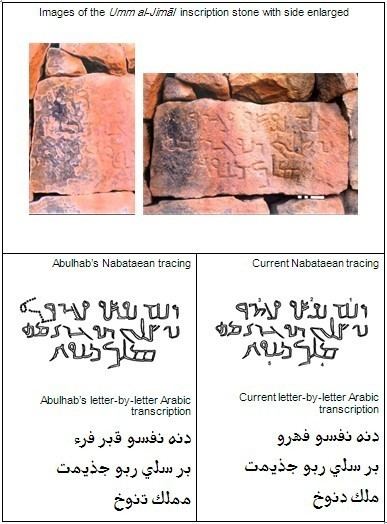Type Abjad Child systems Arabic alphabet | Languages Nabataean language Direction Right-to-left | |
 | ||
Time period 2nd century BC to 4th century AD Parent systems Egyptian hieroglyphs
Proto-Sinaitic alphabet
Phoenician alphabet
Aramaic alphabet
Syriac alphabet
Nabataean | ||
The Nabataean alphabet is a consonantal alphabet (abjad) that was used by the Nabataeans in the 2nd century BC. Important inscriptions are found in Petra, Jordan, and Sinai, Egypt.
Contents
History
The alphabet is descended from the Syriac alphabet, which was itself descended from the Aramaic alphabet. In turn, a cursive form of Nabataean developed into the Arabic alphabet from the 4th century, which is why Nabataean's letterforms are intermediate between the more northerly Semitic scripts (such as the Aramaic-derived Hebrew) and those of Arabic.
Comparison with related scripts
As compared to other Aramaic-derived scripts, Nabataean developed more loops and ligatures, likely to increase speed of writing. The ligatures seem to have not been standardized and vary across time and space. There were no spaces between words. Numerals in Nabataean script were built from characters of 1, 2, 3, 4, 5, 10, 20, and 100.
Unicode
The Nabataean alphabet (U+10880–U+108AF) was added to the Unicode Standard in June 2014 with the release of version 7.0.
